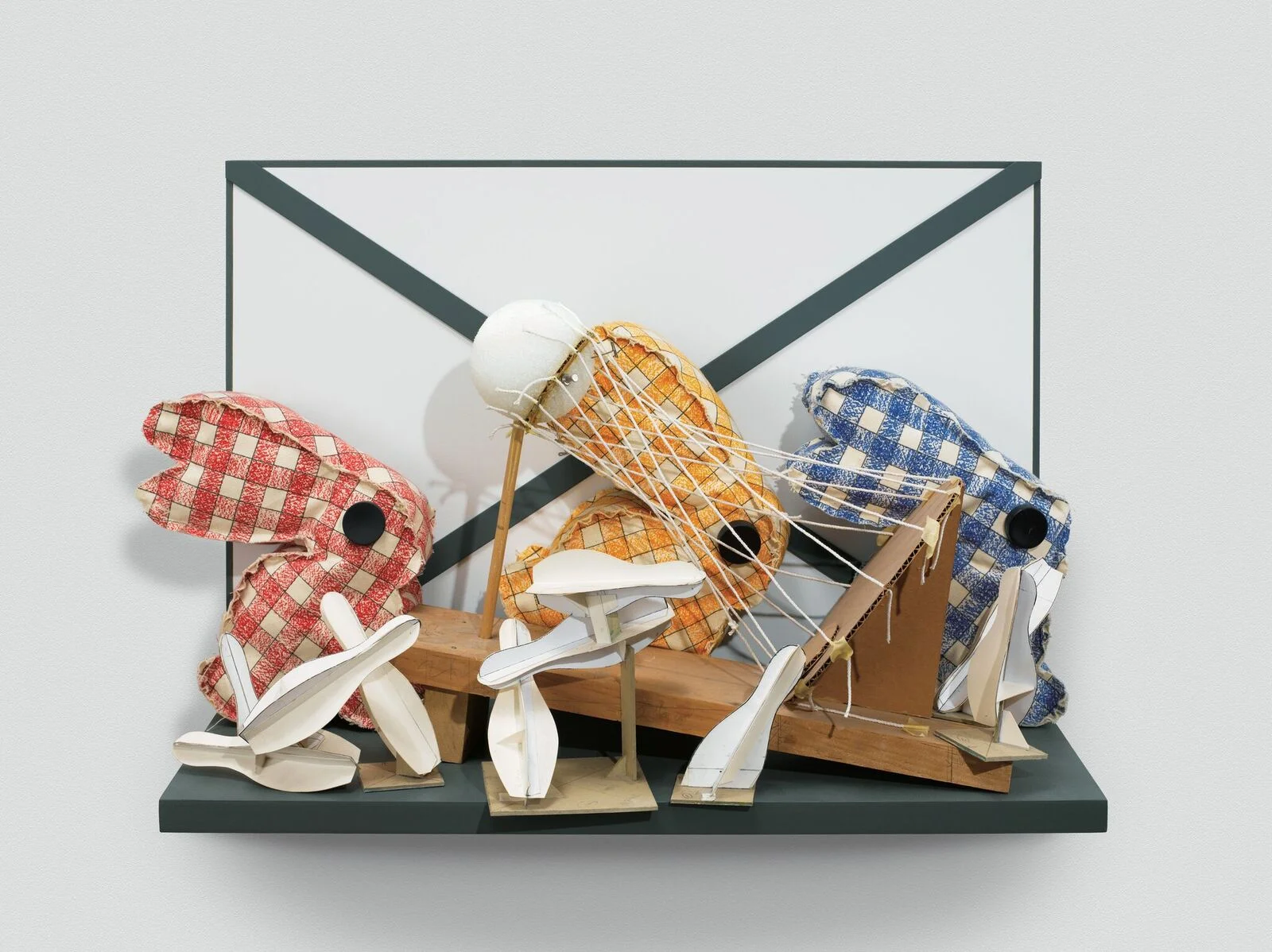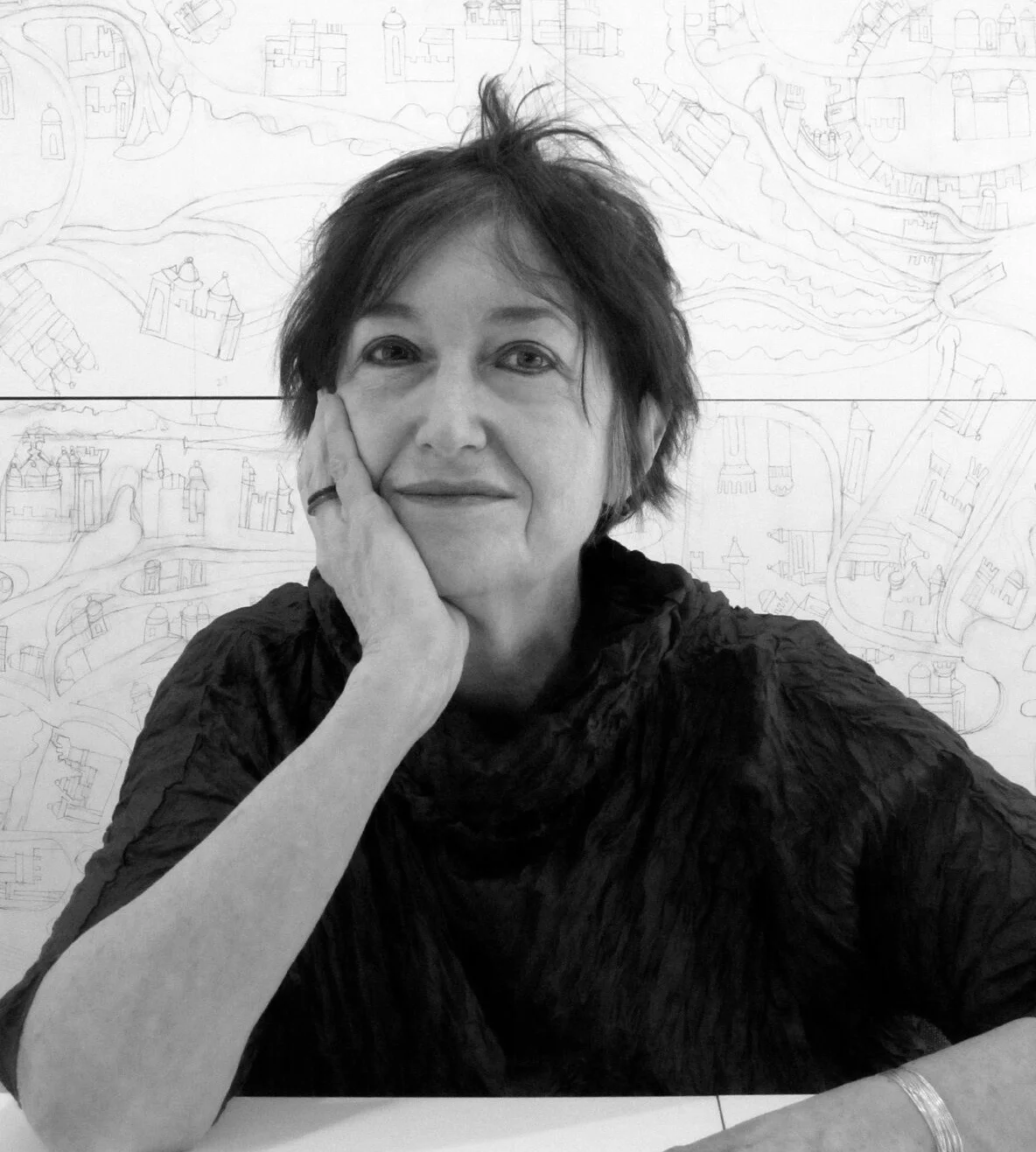James Rieck
"Rapture"
Lyons Wier Gallery
New York, 542 West 24th Street
Los Angeles based artist James Rieck's newest body of paintings mines that euphoric moment of awareness when emotions are born. Rieck combines imagery of highly sexualized historical masterpieces that are on public display along with models extrapolated from 1950’s and 60’s commercial magazines. Charged with ambiguity and boldness, the paintings capture a private moment of awareness and desire.
YV: One of the first impressions the viewer gets after seeing your work is that the faces of the figures are never shown. What was the initial inspiration behind eliminating the figure’s eyes, their gaze, from your paintings?
J.R: In the very beginning, I started with a drawing of a girl in a skirt from an ad in a catalog and the ad itself had already been cropped. It only showed the girl from the waist down to emphasize her skirt. When I made the drawing everyone asked me why I cropped it. When actually it wasn’t me who cropped the image. Someone else had chosen to do so and that edit became essential to me. It became an effective tool to for me to add emphasis and create focus. Over time, I kept the eyes out because I wanted the paintings to have a voyeuristic feeling. With omitting the figure’s eyes, the viewer is not being looked back at which gives them a sense of privacy within their voyeuristic moment.
Jeune Garçon au Cheval, 2017 Oil on canvas, 24x72 in / 61x83 cm
YV: You pay close attention to style and the way in which the details of the fashion is presented. Do you have a special interest in fashion and if so, when did it begin?
J.R: I think it started with my mother. She had a very good sense of fashion and she was a very stylish person. You can read a little Freudian quality into the paintings but I also came to realize that as I painted the figures, the clothing they wore signified quite a lot. For example, nearly all of the pictures come from middle class catalogs - department store catalogs where people try to aspire to be something else. The clothes they depict in the ads were there to make you feel higher class and were styled in a way to represent class. I think that my articulation of the fabrics amplify a psychological state that they are in - the characteristics of a person. Clothes always stand in for something. We put on certain clothes to show ourselves in our best light. Inevitably, they are hiding something from the viewer. The more I emphasize the clothing’s fabric on the characters, it's less about an interest in fashion and more of a psychological place to go.
One: Number 31, 2017 Oil on canvas, 24x72 in / 61x83 cm
YV: Your hyper realistic paintings have a cropped effect, giving the viewer a glimpse of information about the environment and the person in it. There is an emphasis on the outfit, posture, hand gestures, and expressions. By using models extrapolated from 1950’s and 60’s commercial magazines do you think your works are conveying the idea of perfectionism and beauty?
J.R: I almost make them iconic, and will even go beyond that, making them God-like or extra- natural. This approach amplifies a kind of fakeness, the opposite of being real.
Generally, they are models who are faking it. Their gestures are not real, their glances at one another are not sincere, there is nothing about them that’s genuine. The models are inherently false. I pick up on their falseness and through their gestures, want to convey that there is both a perfectness and a perfect falseness.
We as people respond to body language subconsciously, in the same way fashion is there to present ourselves and our bodies. This is maybe another reason why I don’t show the eyes of figures, because the eyes show a realness that I am trying to disguise.
YV: The works in this exhibition contain imagery from modern and contemporary masterpieces such as Matisse’s Le Bonheur de Vivre, Pierre-Auguste Renoir’s Bather Drying Herself, and Andy Warhol’s Marilyn Monroe. Why did you pick these masterpieces to include in your works, and what kind of a relationship can we draw between the backgrounds and the figures? What story are they telling us?
J.R: I juxtapose these things and surely someone is going to attempt to make sense out of it - that’s inevitable. I leave a little ambiguity so it's not didactic or an illustration of an idea. The paintings in the backgrounds all have a sense of some kind of sexuality. Generally, there are lot of naked people in them and then the people wearing clothes. They are trying to have this moment of realness in the gallery with the painting that is fake. They are trying to have a sublime moment with art. Anyone who is coming to see my paintings right now is trying to have this moment of rapture with the work. It is a private, internal space that is created in a public setting. That is somewhat the core of my work, I don’t want to say it’s solely about that because it’s truly about many things - whatever you want to bring to it, it is about. I set up a situation that allows you to fill in the blanks to where it makes sense to you. I call the show “Rapture” as a kind of stand-in for sublime climax.
Installation view "Rapture" by James Rieck
YV: In a previous interview you said, “One’s relationship with their environment is a critical definer of how they feel about themselves and the world.” How does your current environment effect or influence you?
J.R: I think it is pretty clear that the colors are bright, the air clear and a sense of there is a sense of happiness. Los Angeles is a place you don’t have to feel bad for feeling good which is unlike a lot of other places. L.A. has a reputation of being extremely superficial but I find it to be very real. That doesn’t mean people aren’t fake - fake people are everywhere. We fake our everyday. We put clothes on which is being fake. On some level it's disguising yourself, telling the world who you want to be. In that sense, where we choose to live also says something about ourselves. Along with where we travel, what we do, what we post online, etc. These are all things telling the world who we are or who we want to be.
Le Bonheur de Vivre, 2017, Oil on canvas, 24 x 72 in / 61 x 183 cm
YV: Can you tell us about the process of your paintings from start to finish and how long they take to complete?
J.R: I start with some form of inspiration, some spark, something I notice, a pattern I recognize, something that I see somewhere in the world, or even some gesture that I’m curious about. I take that inspiration and find advertising or photographs that I want to work with, and then I Photoshop them for several months on different subjects. I have many different things going on at once in various directions.
For instance, I started designing this show three years ago and it has taken me this long to complete these paintings. Not to actually physically make the paintings but to come around to the threshold where I said okay this one I’m going to make. I start a lot of paintings but I don’t finish every painting. Maybe one in ten never get finished. It’s hard to say exactly how long it takes me to finish a work, as it depends on many variables. It takes about a month to make a painting but it is going to be made of in many months because I will start making them all at once. I try to create the whole body and create all of the paintings together so that they have a connector, a feeling, and a color palette. Some works get finished first and others are completed later on. In the middle of a work I will sometimes start on a new one. A new idea may come quickly but it will take me many months to finish all of the paintings.
Y.V: Is there anything that is particularly inspiring you these days?
J.R: While I have been here in New York, I’m fascinated with women putting on their makeup in public. I find this to be a fascinating phenomenon that I can’t get around. I find that women see that phenomenon different than men. Women take it for granted. They put makeup on everyday and men don’t put makeup on at all. So when I see a woman putting makeup on in public, it is very benign to her but it is very exotic to me. It is not something I see everyday. It is a public thing that I’m interested in. People are doing it in public when they are privately in their head. To the person putting the makeup on it is a very intimate moment with themselves in the mirror. However, don’t read too much into this because I may never make those paintings but that is the kind of thing that I notice.
The exhibition runs through November 4, 2017










